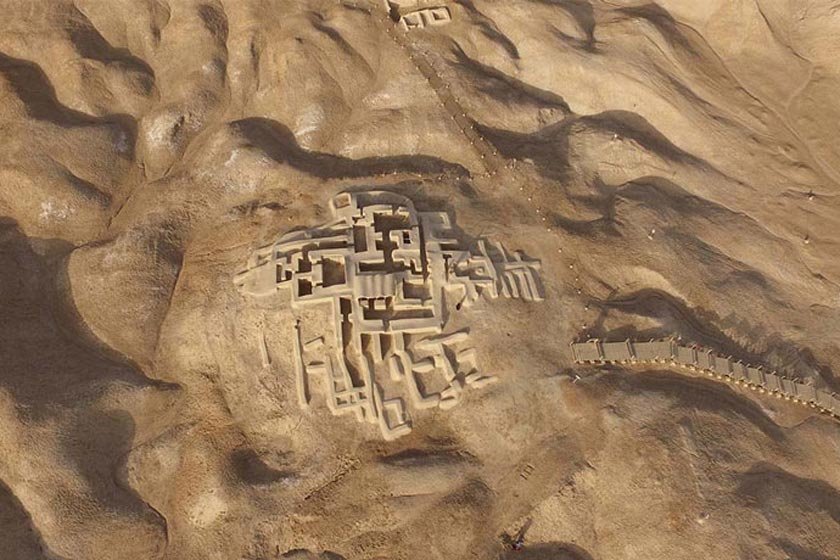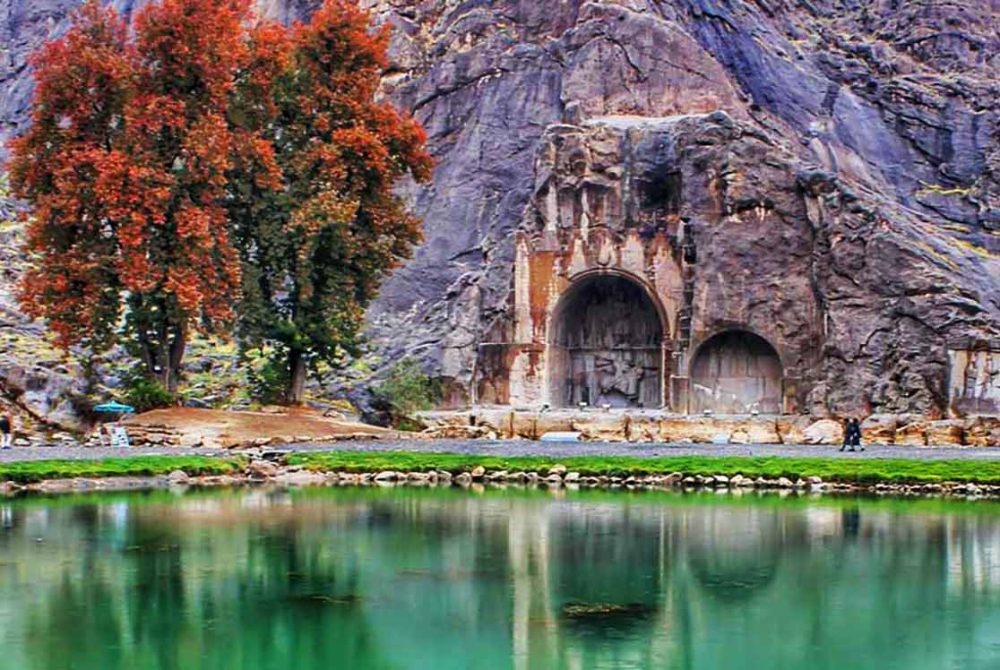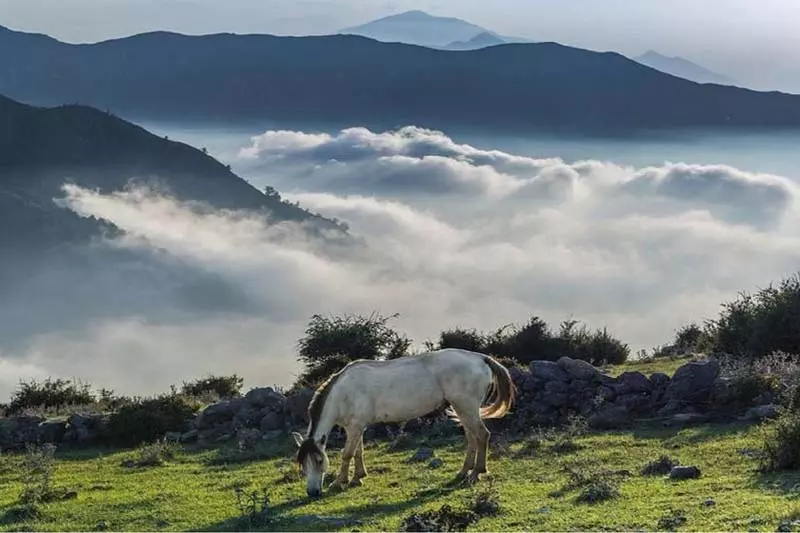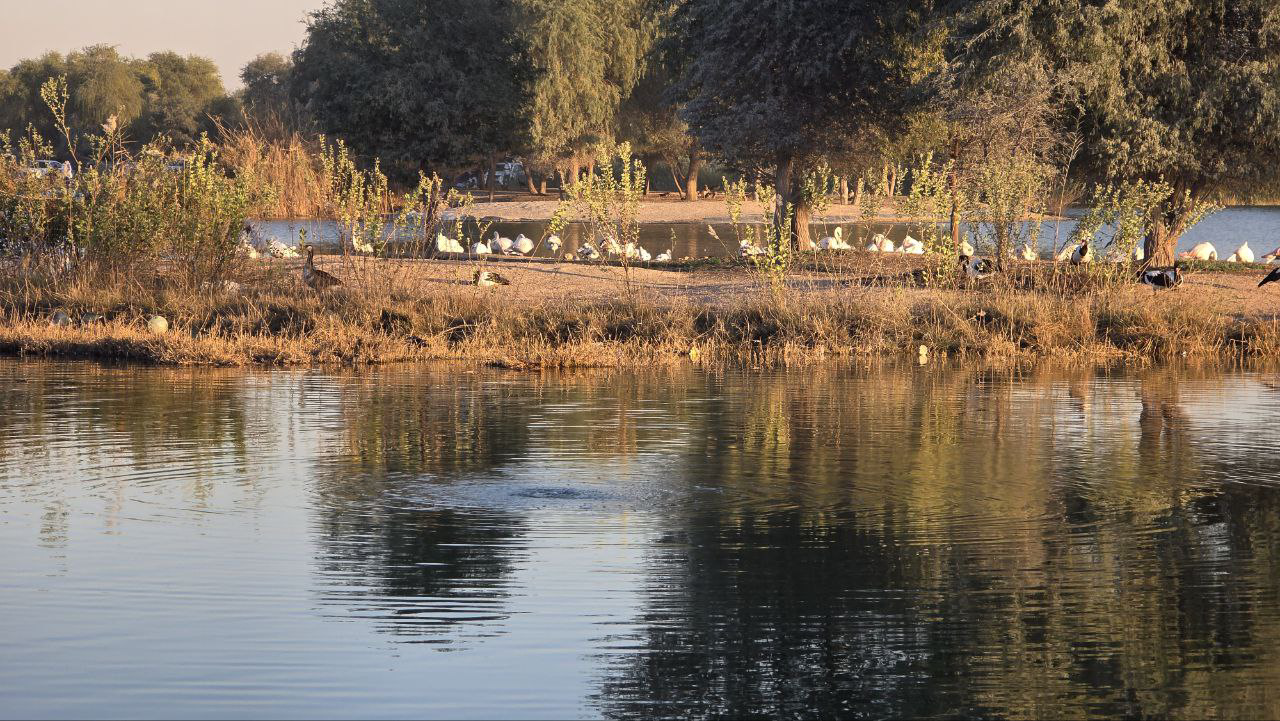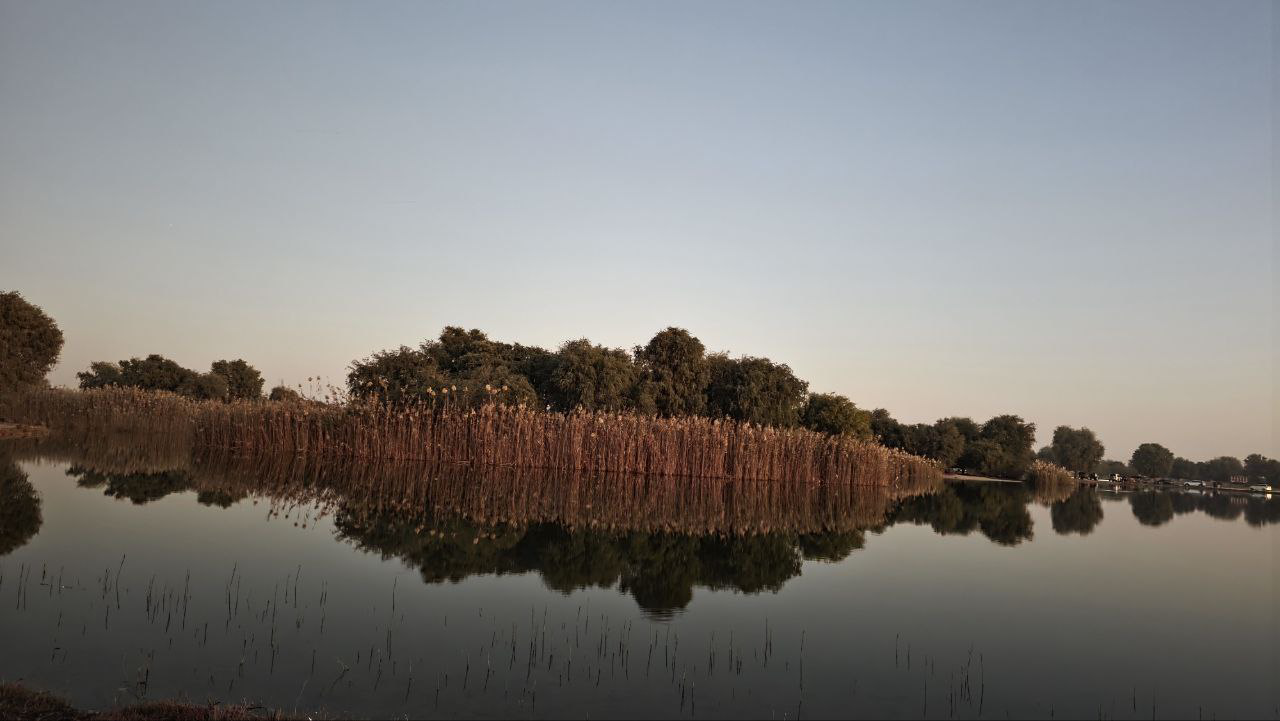Nasir al-Mulk Mosque | The most enchanting mosque in the heart of Shiraz, Iran.
Nasir al-Mulk Mosque, also known as the Pink Mosque, is one of the most beautiful mosques in Shiraz, with a history dating back to the Qajar period. Situated in the Goudarzaban neighborhood on Lotf Ali Khan Street, this mosque captivates visitors with its mesmerizing play of light and color. Today, Nasir al-Mulk Mosque, or the Pink Mosque, stands as one of the most popular attractions in Fars Province, drawing numerous domestic and international tourists.
Location of Nasir al-Mulk Mosque
Nasir al-Mulk Mosque is located in the Goudarzaban neighborhood on Lotf Ali Khan Street. To reach this destination, you can use public transportation or your own vehicle. The nearest metro station to the mosque is Valiasr Station, approximately 1.5 kilometers away. You can cover this distance by taxi or on foot. If you plan to take the bus, board buses on the Valiasr-Prayer Terminal line and disembark at Chahar Rah-e-Moshir Station. Additionally, if traveling by private car, parking facilities such as Esteghlal, Farhang, and Taleqani on Piroozi Street are within a five-minute distance for your convenience.
History of Nasir al-Mulk Mosque
Nasir al-Mulk Mosque was commissioned by Mirza Hasan Ali, known as Nasir al-Mulk, a prominent figure of the Qajar dynasty. The architectural design of the mosque was executed by Mohammad Hasan-e-Memar. The construction of this magnificent structure took approximately 12 years, spanning from 1293 to 1305 Hijri. The mosque covers an area of 2212 square meters, with a total area of 2980 square meters. Over the years, the preservation and maintenance of this valuable historical monument have been carried out by the Nasir al-Mulk Endowment, supervised by Mr. Mahmoud Ghavam and managed by Engineer Kourosh Javidi Parsi Jani.
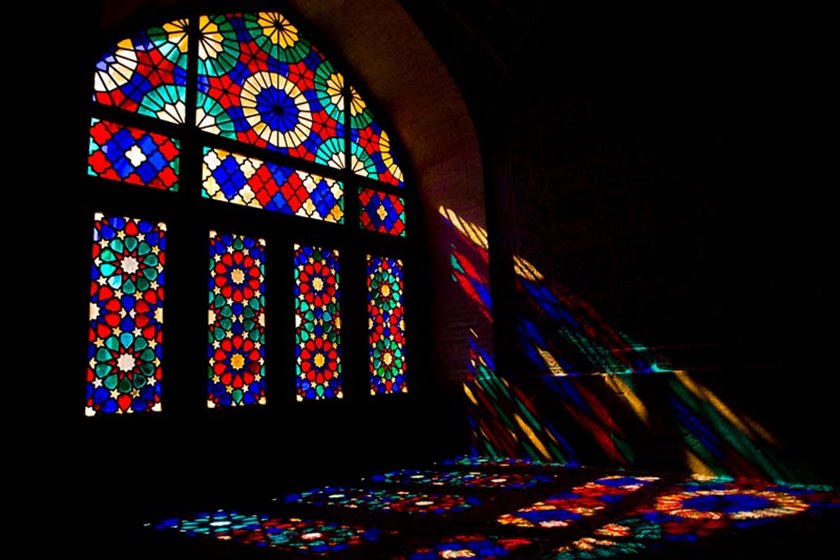
In the book “Farsnameh Naseri,” references to Nasir al-Mulk Mosque can be found:
“In the foundation’s strength and stone columns, the night prayer hall, and the pond in the courtyard, it resembles the mosque of Moshir al-Molk and, in fact, is slightly larger, with some recent additions that enhance its merits.”
The mosque was registered as number 396 in the list of national monuments of Iran in 1358 by the Iran National Heritage and Antiquities Association.
Architecture of Nasir al-Mulk Mosque
Nasir al-Mulk Mosque features a spacious courtyard located on the north side of the mosque. This valuable complex consists of several distinct sections, each showcasing architectural artistry.
Main Entrance Iwan of Nasir al-Mulk Mosque
The entrance boasts a grand portico adorned with seven-colored tiles on its ceiling. The facade of the portico is constructed with Gandomak stone, and the entrance iwan is beautifully decorated with seven-colored tilework. The large wooden doors at the entrance feature a marble slab inscribed with a poem by Shurideh-e-Shirazi, commemorating the mosque’s builder and completion year.
Western Shabestan of Nasir al-Mulk Mosque
The mosque comprises both eastern and western shabestans (prayer halls), unique in their alignment along the qibla axis. The western shabestan, distinguished by its brick covering, exhibits more intricate craftsmanship. Its dome is supported by spiral-patterned stone columns arranged in two rows of six, totaling twelve columns symbolizing the twelve Imams. The shabestan has seven wooden doors, each adorned with colorful stained glass, connecting it to the mosque’s courtyard. It is often referred to as the winter shabestan.
In front of this shabestan, there is a six-meter-wide ivan, separated from the courtyard by eight porticos, and it has seven arched niches made of bricks. Quranic verses and floral patterns adorn the niches and the forefront of the porticos.
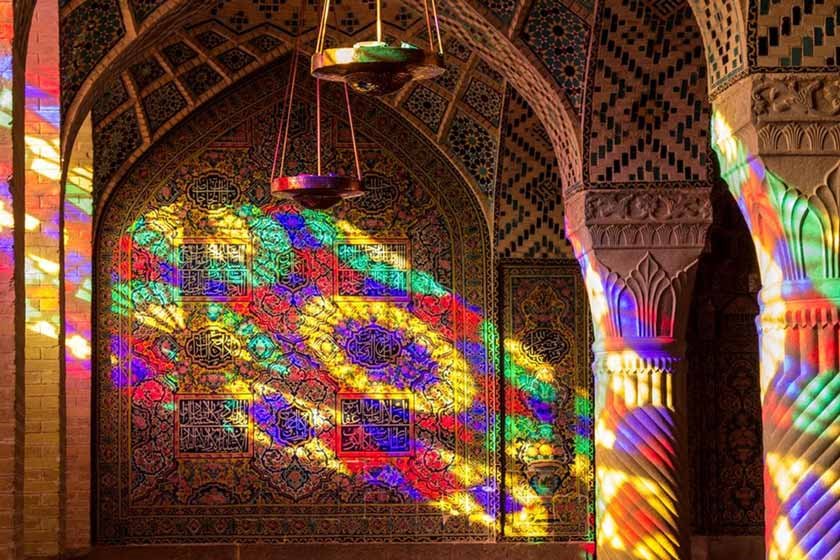
Eastern Shabestan of Nasir al-Mulk Mosque
The stonework and decoration of the eastern shabestan are inspired by the architecture of Vakil Mosque and Moshir Mosque in Shiraz, made from Gandomak stone. The shabestan is adorned with beautiful tilework, including Islamic motifs, Quranic verses, and calligraphy in Thuluth script. The floor is adorned with turquoise tiles, and the mihrab’s marble floor is distinctively lowered compared to the shabestan floor. Between the arches of the shabestan, there are few stone inscriptions.
A corridor leads to a well, known as “Gavur Goo” or cow’s well, in this area. Additionally, there is a small pond and a basin in this section. The eastern shabestan has been converted into the Endowments Museum.
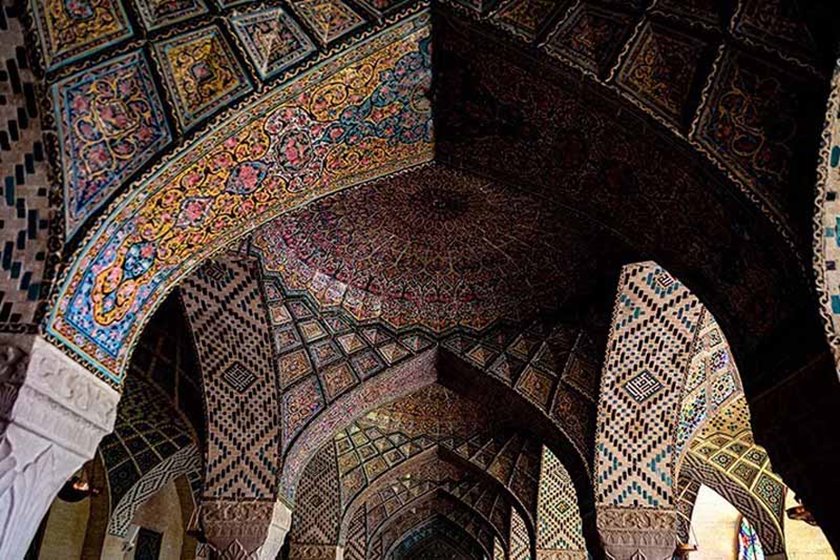
In the northern wall of this shabestan, there is an inscribed stone with a beautiful Nastaliq script. The following poem is elegantly inscribed on it:
“The purpose of the inscription is a mark from us that remains, so I don’t see any remaining existence; Except a benevolent heart, someday, in mercy, prays for the masters.”
Finally, the names of Mohammad Hasan, the architect, and Mohammad Reza, the tile-maker, are mentioned, along with the starting date in 1293 Hijri and the completion date in 1305 Hijri.
Pearl Iwan
The mosque has two north and south iwans, differing in design, with the northern iwan being more exquisite than the southern one. The northern iwan has three half-domes on three sides and opens onto the courtyard from the fourth side. The central dome of this iwan, known as the “Pearl Iwan,” is tall and adorned with Quranic verses and hadiths. On its left side, the date 1299 Hijri is inscribed. The iwan has four chambers, and its central ceiling is intricately decorated with muqarnas and a set of five basins. Wooden supports are placed beneath the brickwork of the iwan to prevent earthquake-induced vibrations.
Visiting Hours and Tickets for Nasir al-Mulk Mosque
The visiting hours for Nasir al-Mulk Mosque vary between the two halves of the year. In the first half, you can visit between 8 AM and 5 PM, while in the second half, the visiting hours are from 7 AM to 4:30 PM. The mosque is closed on specific religious occasions. As of 1399, the ticket prices are 5,000 Tomans for domestic tourists and 20,000 Tomans for international tourists. Individual prayer is also permitted.
The best places to see in Shiraz (photo + address + information)
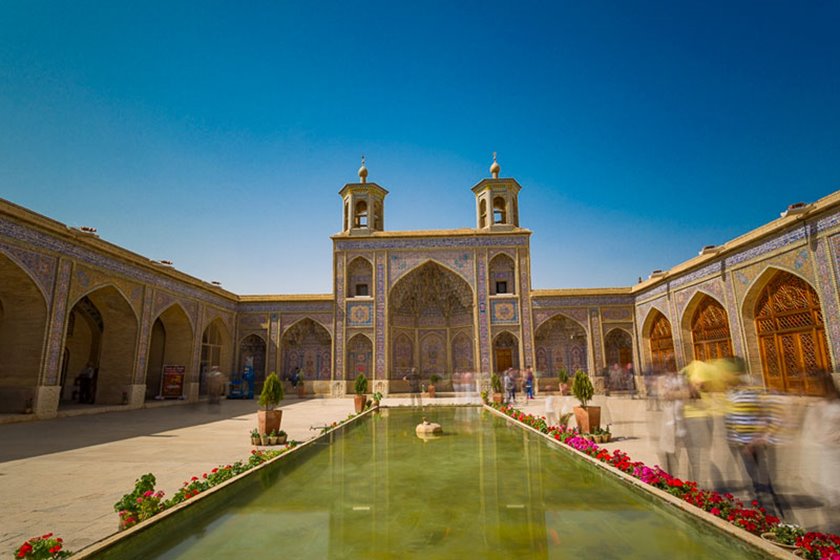
Best Time to Visit Nasir al-Mulk Mosque
The optimal time to witness the mesmerizing light and color display at Nasir al-Mulk Mosque is between 8 AM and 10 AM. During this timeframe, you can capture the most stunning photos of the beloved shabestan.
Frequently Asked Questions
Where is Nasir al-Mulk Mosque located?
Nasir al-Mulk Mosque is situated in the Goudarzaban neighborhood on Lotf Ali Khan Street.
What is the best time to visit Nasir al-Mulk Mosque?
The best time to visit Nasir al-Mulk Mosque and experience the light and color display is from 8 AM to 10 AM.
What are the visiting hours of Nasir al-Mulk Mosque?
Visiting hours for Nasir al-Mulk Mosque vary between the first and second halves of the year. In the first half, it is open from 8 AM to 5 PM, and in the second half, it is open from 7 AM to 4:30 PM.
Is there an entrance fee for Nasir al-Mulk Mosque?
Yes, Nasir al-Mulk Mosque operates as both a mosque and a museum. As of 1399, the ticket prices are 5,000 Tomans for domestic tourists and 20,000 Tomans for international tourists.
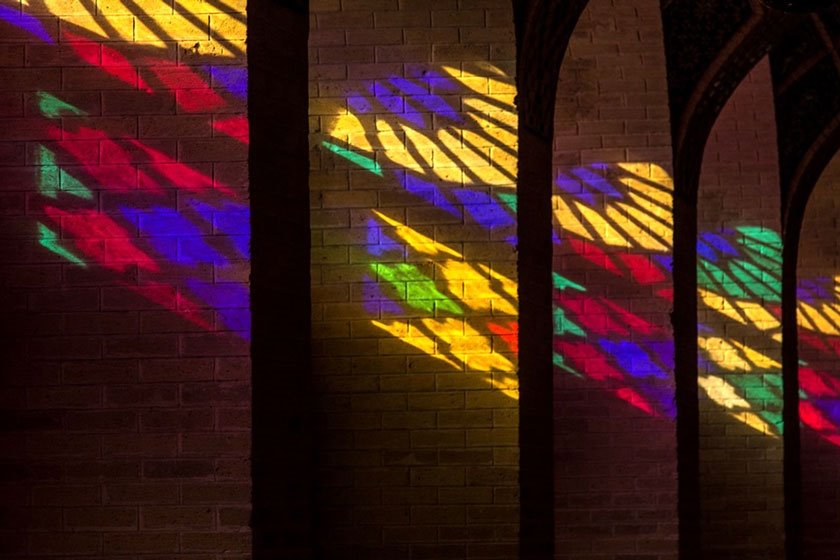
Can prayers be performed at Nasir al-Mulk Mosque?
Yes, individual prayers are allowed at Nasir al-Mulk Mosque.
This comprehensive guide provides insights into the architectural marvels and practical details for visitors to Nasir al-Mulk Mosque, allowing them to fully appreciate the historical and artistic significance of this enchanting site.
For more detailed information about visiting hours, ticket prices, and the best times to visit Nasir al-Mulk Mosque, please refer to local sources or the mosque’s official website.


